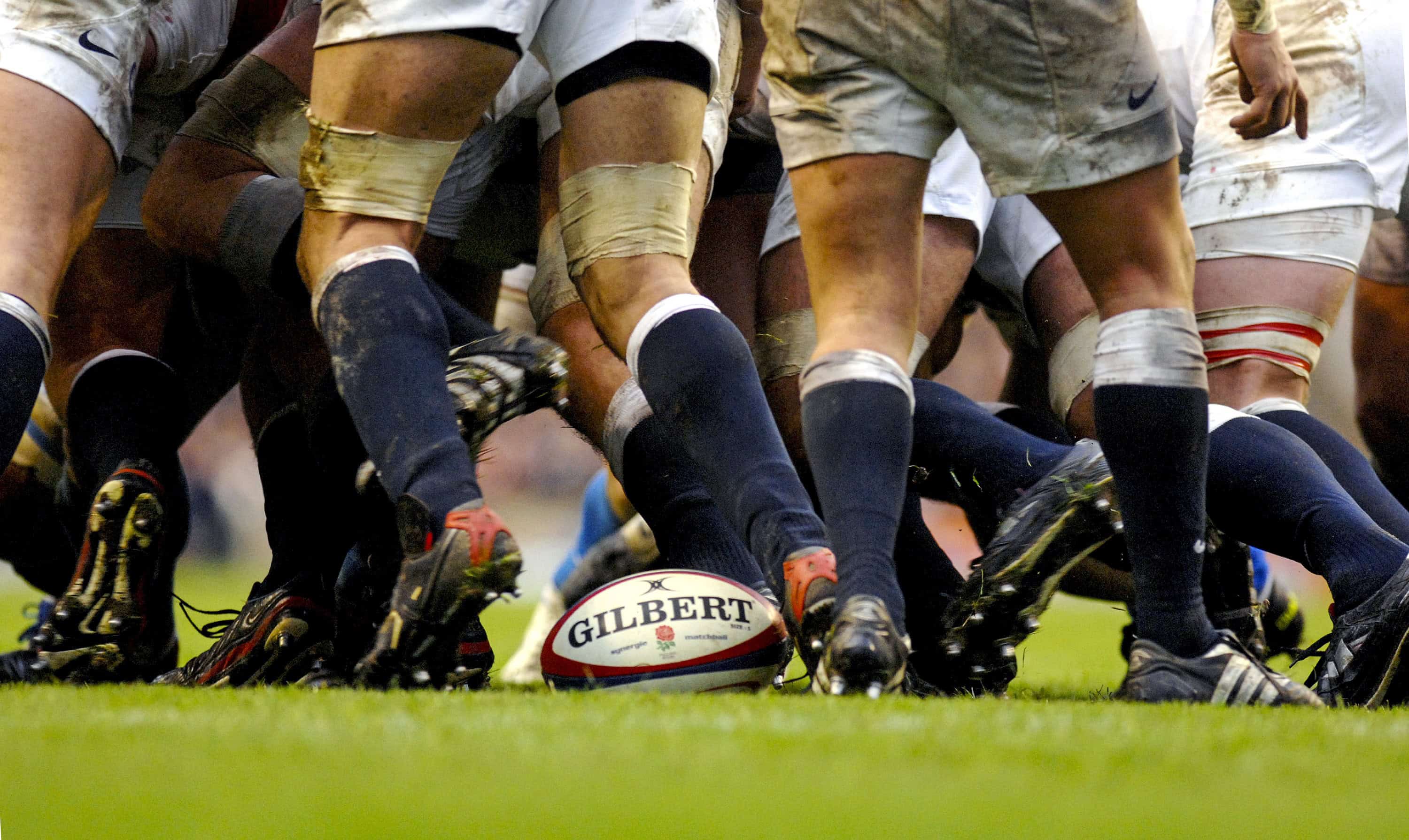
Brain Injury in Rugby: Time Has Scrum for Change
It was bound to happen and now it has. A group of eight former professional rugby players, including former England hooker and World Cup winner Steve Thompson, have launched legal action for the brain injuries they sustained whilst playing rugby.
Rugby’s current protocols, in many ways, do a much better job at safeguarding players from brain injuries – however this doesn’t mean there aren’t still issues and that previous protocols were sufficient.
Earlier this year, Leicester Tigers’ Jimmy Stevens announced his retirement from the sport at the age of 29. After suffering a head injury in the 2018-19 season, medical experts advised Stevens to quit playing. There’s then Leeds Rhinos captain Stevie Ward, who’s been unable to return to play since February 2020 after continuing to suffer problems from a concussion he sustained.
There has been a spotlight on head injury in the sport and now questions arise as to whether the past and current Rugby Football Union regulations go far enough to protect players from the effects of head trauma.
In this article, I take a look at some of the key issues of brain injury management in rugby and the implications of legal action.
Brain Injury Management in Rugby – Is Enough Being Done?
There has been increasing scrutiny on the management of head injuries in sport in recent years. Rugby Football Union have adapted and taken steps to build a programme aimed at preventing injuries and mitigating their impact of when they do occur. But, when a 29 year old must retire for medical reasons, it begs the question – do the rules go far enough or is this just an unfortunate but accepted risk of playing rugby?
This issue always creates fierce arguments on both sides. There are those who oppose any further changes, as they feel that the risk of injury is part and parcel of playing rugby, that players know what they’ve signed up for and that further changes risk compromising the authenticity of the sport. However there are also a growing number of opponents who argue that the developing research in this area is now overwhelming and cannot be ignored and that doing so puts athletes in danger of crippling injuries, early retirement and, in the most horrifying situations – death.
My job as a brain injury solicitor is to represent those who have suffered brain damage due to medical negligence or accidents that should not have happened. It’s therefore probably not surprising that my view is that there is still more to be done in protecting rugby players from head injuries.
I say this whilst acknowledging the great advances made by Rugby Football Union on this issue already. The Head Injury Assessment (‘HIA’) Protocol deserves credit for being worlds ahead of many other head injury guidelines in other sports. The effectiveness of updating the protocols on head injury cannot be denied – in the 2019 Rugby World Cup, when the High Tackle Sanction Framework was introduced for the first time, there was a 28% reduction in concussions compared with the 2018 average. However the HIA has been around for about only six years.
To me, these benefits, in protecting athletes from life-altering injuries, vastly outweigh the frustration caused by having to abide by further safety precautions.
Undoubtedly, changing the rules in any sport is both a fragile and serious issue, but this is a subject which transcends beyond the immediate world of rugby. The reality is that there are wider implications of an athlete suffering an injury which should have been prevented. It leads to questions about the legal obligations on clubs and regulators as to whether they’ve failed in their duties to protect their employees, the athletes, from known risks. This opens a can of worms where athletes could be eligible to pursue legal action against their clubs or the governing bodies for the unnecessary injuries and financial losses they’ve suffered because they weren’t appropriately protected from known risks.
It’s also important to consider the ripple effect that such an injury is bound to have on the athlete’s family, their local community and the national healthcare system – who are often left picking up the pieces to provide care, support and rehabilitation. Is this fair, when the risks may have been known by governing bodies all along, but ignored in the interests of the wider game?
It’s often difficult to see the relationship between athletes and sport as anything more than a form of entertainment. Many view athletes as highly skilled and hardworking, but ultimately in a fortunate position of being paid to fulfil their dreams. However, it’s important to remember that this relationship is really no different to any other employer and employee relationship.
The employee is performing their role and the employer has a legal duty of care to protect them from known risks of their trade. To provide a comparator – hundreds of successful legal claims for compensation have been brought by those who suffered asbestosis because their employers were aware of the risks but failed to adopt reasonable preventative measures. The same applies to athletes and the known risks to them. You only have to consider the legal action taken against the NFL to see that this is not an issue to be ignored. Now, legal claims of this nature are no longer limited to the US.
What More is Needed?
I don’t hold myself out as an expert on rugby or a neurologist, so my views are purely from a legal standpoint.
In my view, the alterations needed to the sport aren’t significant enough to impact the authenticity of the game but could make huge strides in protecting players. The focus should always be to identify what puts players at highest risk and reasonable ways to minimise this. The key is to tighten existing injury-prevention strategies and adopt new ones, to further minimise the incidence of concussion, both in professional and amateur games.
Training plays a huge part in any sport and is often overlooked as it’s not visible to the audience. However athletes will usually train for hours a day, five or more days a week. There’s huge exposure to potential injuries here. These injuries, no matter how minor they may seem, add up. Ensuring that appropriate safeguards are put into place during training could have a monumental impact on a player’s health.
This is particularly relevant for the management of tackles, widely attributed as the biggest cause of head injuries in rugby. Research shows that the tackler is more at risk of a head injury than the tackled and that a number of issues play a part in how an injury can occur – including the height and speed of the tackle, the position of the tackler (an upright tackler is more likely to be injured than one who is bent at the waist) and the position of the players.
Further education and sanctioned-enforcement of safer tackling techniques will be key in changing behaviours and reducing incidences of injury. Education is also key in equipping the players with sufficient understanding of the potential consequences of these brain injuries, so they are less reluctant to speak out when injured. Athletes are, understandably, focussed on their sport and so it’s been observed that they have a tendency to do anything they can to play on. Often, this is as a result of their natural competitive nature but also because they aren’t fully aware of the dangers of even ‘minimal’ sub-concussive blows.
It is also accepted that, as in any sport, there is always some risk of injury to the athlete. Diagnosing a brain injury quickly and efficiently and providing a comprehensive care package afterwards to ensure total neurorehabilitation is crucial in protecting a player’s health and potentially life.
The Legal Claim
Thompson is only 42 years old and has been diagnosed with dementia. The Guardian reports him not remembering winning in the World Cup in 2003 and sometimes not being able to remember his wife’s name. It’s been reported that all other seven players (including Alix Popham and Michael Lipman) are under the age of 45, all diagnosed with dementia “with probably chronic traumatic encephalopathy (CTE), for which the only known cause is repeated blows to the head. CTE can be diagnosed for certain only by a post-mortem dissection of the brain”.
Of course dementia can affect anyone, however the pattern in young athletes being diagnosed can’t be a coincidence.
So what do we know about the legal claim, and what will happen next?
- The current group action (a legal claim where several people come together as a group to pursue a matter, on the basis they have similar concerns) is reportedly against World Rugby (the sport’s governing body) as well as the English Rugby Football Union and Welsh Rugby Union
- The basis for the legal claim is that the Defendants failed to appropriately safeguard players from the known risks of brain injury, which caused athletes to suffer injuries they would not otherwise have sustained if appropriate steps had been taken
- The purpose of a legal claim is to secure compensation (money). The amount of compensation will be determined by the extent of injury and financial loss that can be proven to be caused by the Defendants’ failings. This includes compensation for the symptoms and pain they experience and financial support for the treatment they need, their loss of earnings, medical expenses and care needs. No amount of money can completely make up for a serious injury such as brain injury.
The burden of proof is on the players. This means that they must provide enough evidence to convince a Court that the governing bodies failed in their duty of care to them (as their employers) and that this caused their injuries. To succeed, they need to be able to show that their injuries were most likely caused by (i.e. 51% or more likely) the failings. The players and their legal team will gather evidence, including documents held by the governing bodies, witness evidence and independent expert evidence from doctors.
The legal process can take several months and years, if it goes all the way to trial. Most often, legal claims are settled out of court or abandoned due to lack of evidence before reaching trial.
To succeed in proving their case, the players will need to show that the Defendants did not take appropriate steps to safeguard them from the known risk of injury at the time. It’s important to remember that these players are likely to be concerned about the steps that were taken prior to the introduction of the Head Injury Assessment Protocol, which has only been around for about six years. What’s key here will be identifying what information was known to the Defendants at the time or ought to have been known by them and whether they really did take reasonable steps to act on that information.
It’s accepted that rugby, like most sports, carries with it some risk of injury. However the important thing to remember is that many athletes report not being aware/advised of the impact of these injuries on their long-term health. This isn’t a case where they were willingly accepting of the risks.
Finally, it’s worthwhile remembering that pursuing legal action is never something that people want to do. It’s something they feel compelled to do because of the situation they’ve been left in. The players have also made it clear that they hope to change the sport, to protect future generations. It does not matter that these players are professional athletes, they deserve the same protection from their employers as the rest of us.
I wish these players the very best and hope that sports, in general, can do what they need to do, to protect athletes from known and very serious risks.










